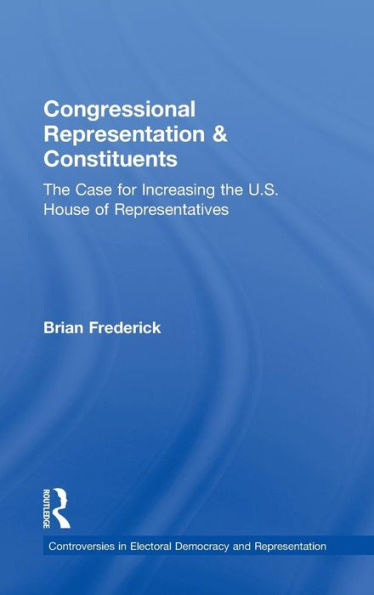Brian Frederick uses empirical data to scrutinize whether representation has been undermined by keeping a ceiling on the number of seats available in the House. He examines the influence of constituency size on several metrics of representation—including estimating the effects on electoral competition, policy responsiveness, and citizen contact with and approval of their representatives—and argues that now is the time for the House to be increased in order to better represent a rapidly growing country.
Brian Frederick uses empirical data to scrutinize whether representation has been undermined by keeping a ceiling on the number of seats available in the House. He examines the influence of constituency size on several metrics of representation—including estimating the effects on electoral competition, policy responsiveness, and citizen contact with and approval of their representatives—and argues that now is the time for the House to be increased in order to better represent a rapidly growing country.

Congressional Representation & Constituents: The Case for Increasing the U.S. House of Representatives
182
Congressional Representation & Constituents: The Case for Increasing the U.S. House of Representatives
182
Product Details
| ISBN-13: | 9780415873451 |
|---|---|
| Publisher: | Taylor & Francis |
| Publication date: | 11/25/2009 |
| Series: | Controversies in Electoral Democracy and Representation |
| Pages: | 182 |
| Product dimensions: | 6.00(w) x 9.00(h) x (d) |
